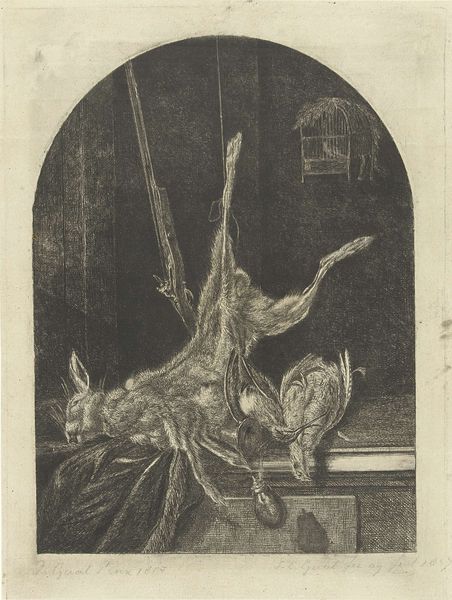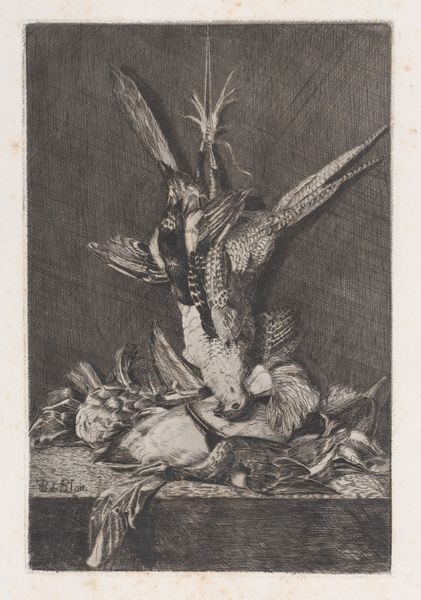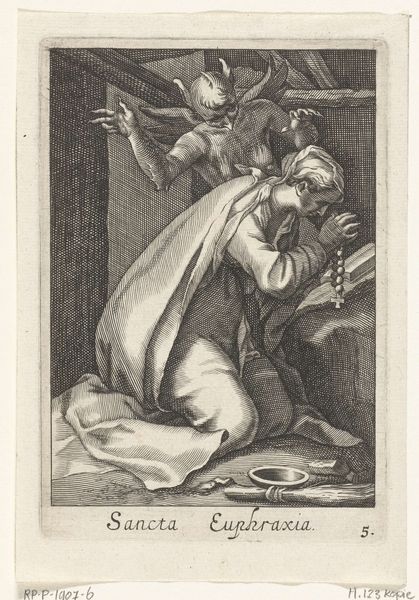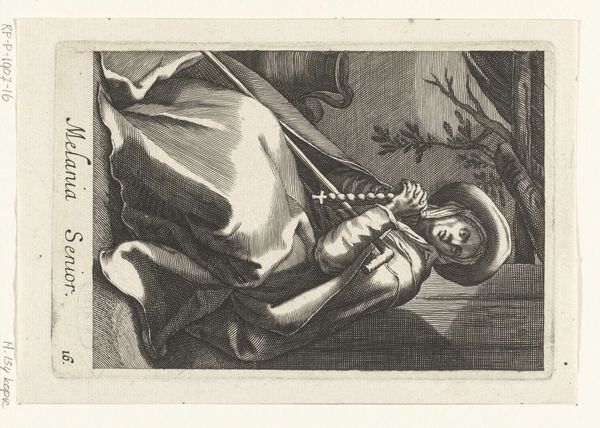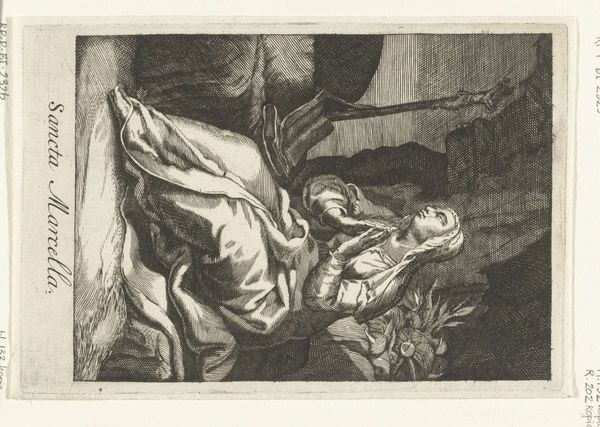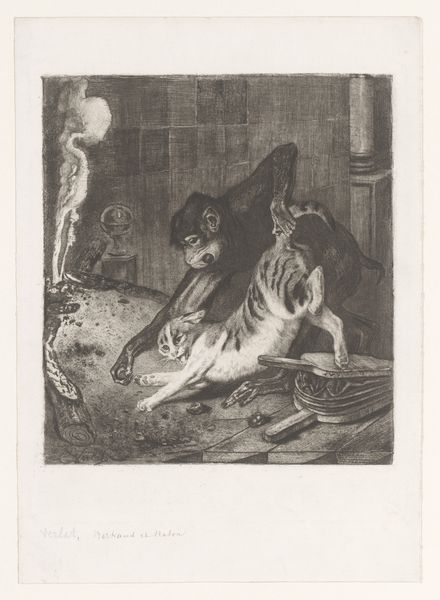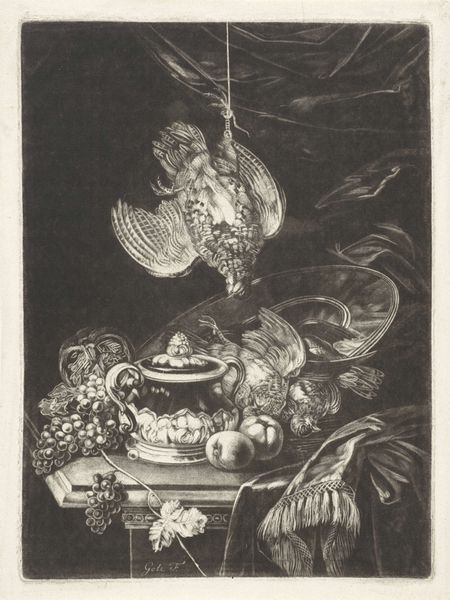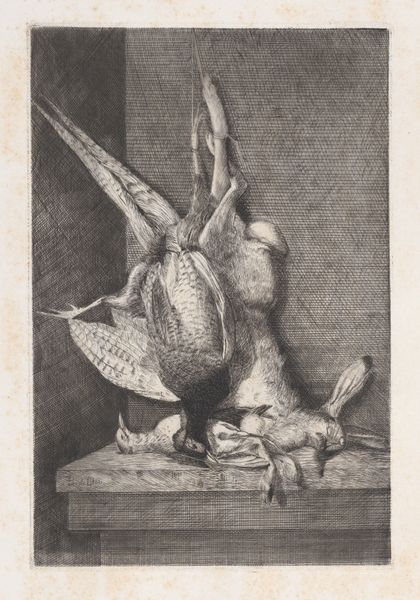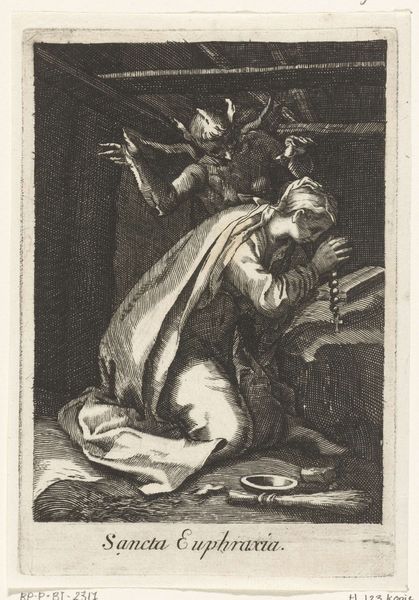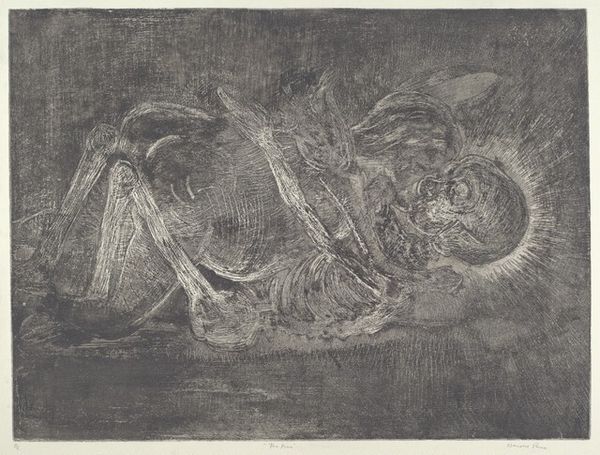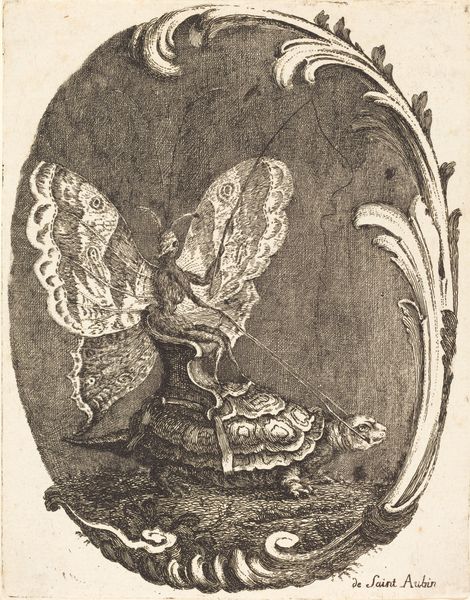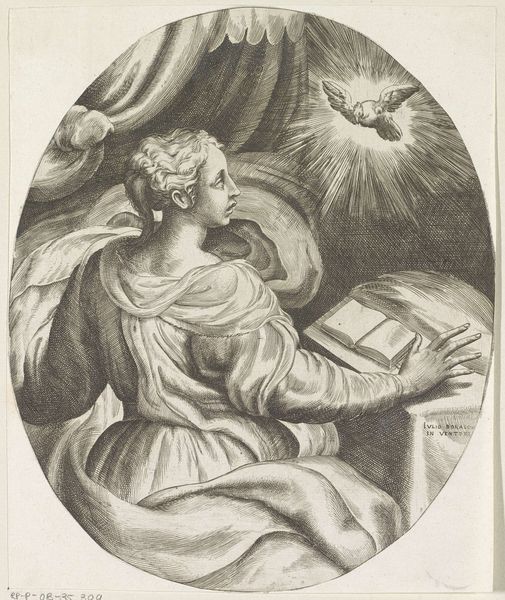
print, etching
#
pencil drawn
#
16_19th-century
# print
#
etching
#
pencil drawing
#
genre-painting
#
realism
Dimensions: height 270 mm, width 195 mm
Copyright: Rijks Museum: Open Domain
Curator: Here we have Jacobus Cornelis Gaal’s "Still Life with Dead Hare," an etching dating back to 1857. Editor: A still life, certainly, but there's an undeniable heaviness about this work. It is draped in shadows, a dark stillness emphasized by the muted monochrome. Curator: The placement of the hare within a genre-painting tradition serves as more than just a display of skill; it can be read as a commentary on the social hierarchy inherent in hunting culture of the 19th century. This piece evokes the relationship between humans and nature during this time. The hunter's supposed mastery… Editor: The hare hangs almost suspended, doesn’t it? And isn't that a small, empty birdcage tucked away in the upper right? These images resonate; the cage and the dead hare carry a potent symbolic weight—freedom lost, life extinguished. Consider the formal use of realism to showcase the lifeless subject. Curator: Precisely. The artist meticulously depicts the hare’s lifeless body, highlighting its vulnerability. It makes you consider not only the starkness of mortality, but also class and privilege. Who gets to hunt, who is hunted, and what does it mean? Editor: I see echoes of vanitas traditions too. Look at the stark presentation, the suggestion of instruments nearby used for hunting…they remind us of life's transience, all existing together. I find myself questioning what "trophies" signify when juxtaposed with symbols of confinement. Curator: It’s easy to fall into easy interpretations of animal rights. Looking closely we see that the piece really captures the nuances of power and control prevalent at the time it was made. By using etching, a medium accessible to a wider audience, Gaal possibly aimed to initiate a broader dialogue on societal issues and class structure, subtly but consciously raising questions that resonated with his contemporaries. Editor: The skill here transforms something brutal into something almost...beautiful, if haunting. It encourages viewers to consider layers of symbolic meaning inherent in hunting imagery: dominion, death, freedom, and confinement. These complex threads tie the artwork to broader cultural narratives and beliefs. Curator: Indeed, thinking about the composition in relation to its time really brings home these points about societal power structures that it raises. Editor: After careful reflection, it occurs to me how potent such familiar images become when artists find ways to recontextualize them, prompting us to ask uncomfortable questions about freedom.
Comments
No comments
Be the first to comment and join the conversation on the ultimate creative platform.
